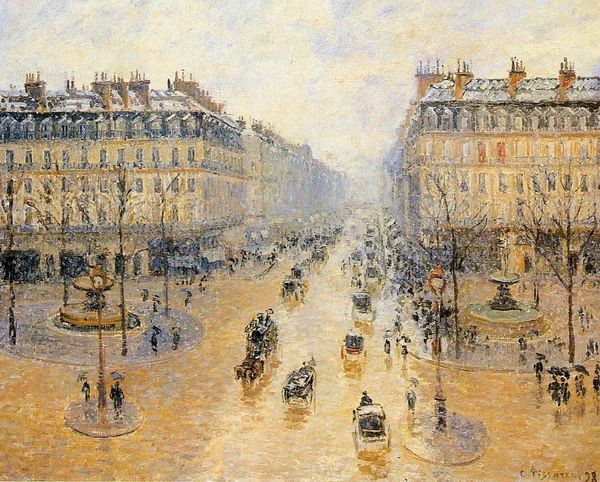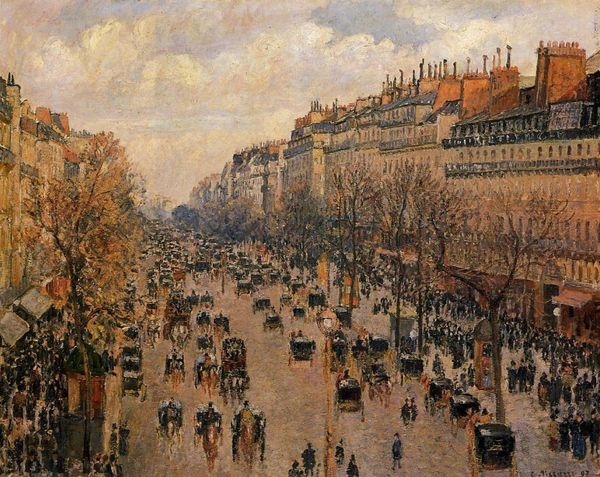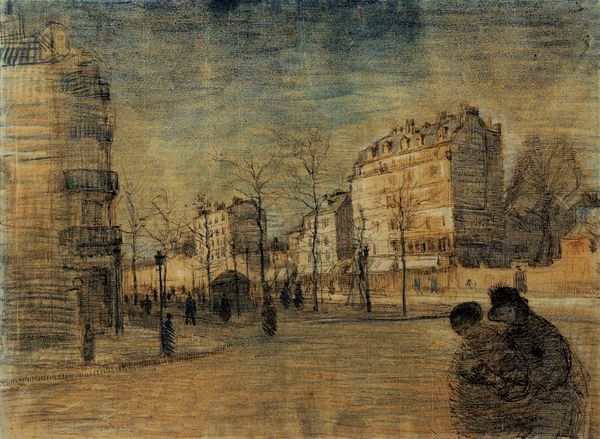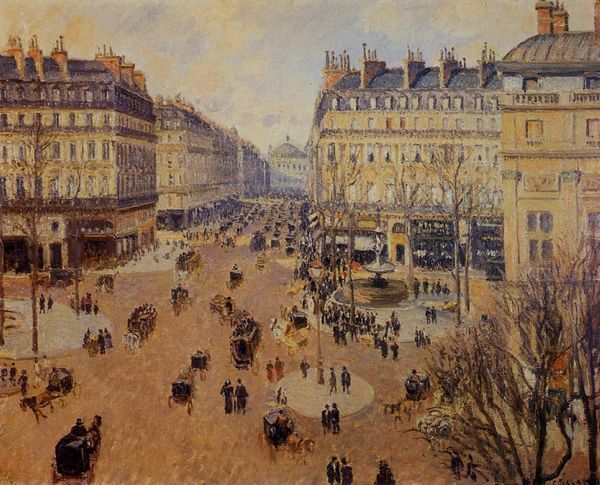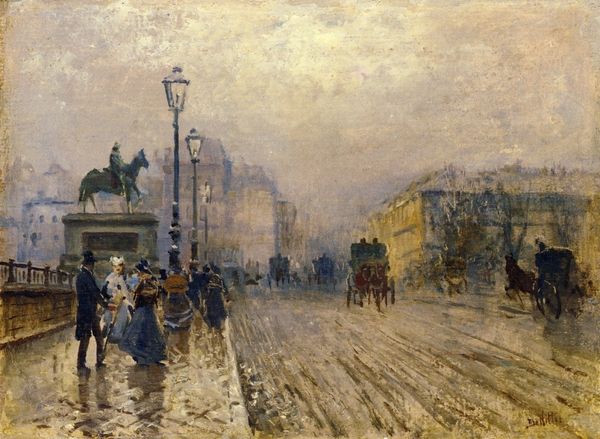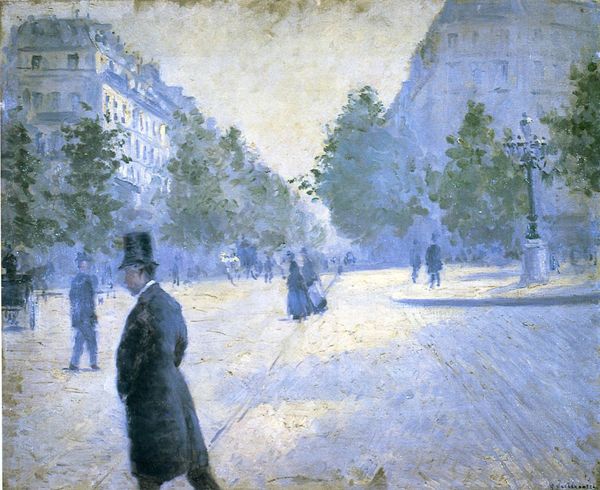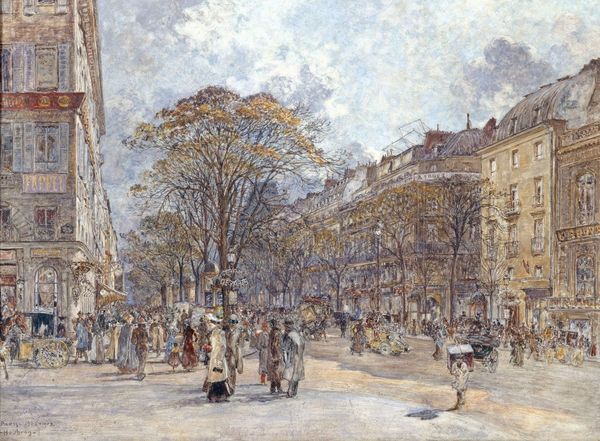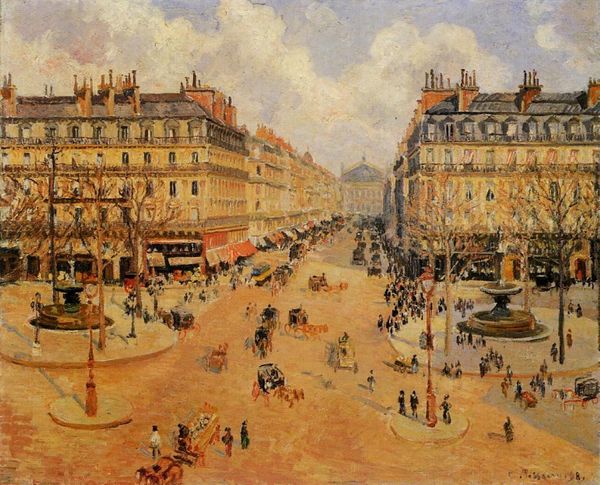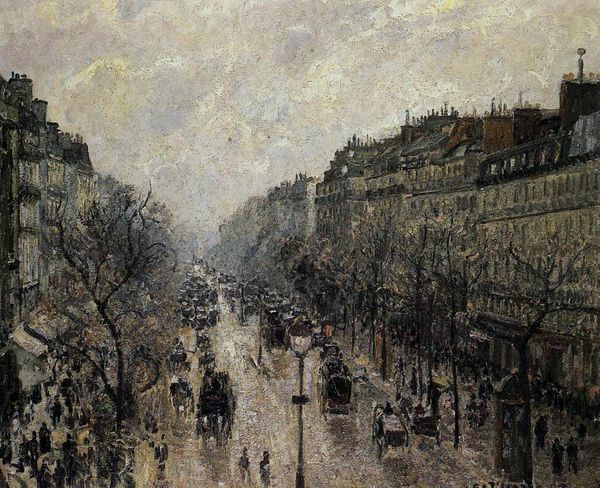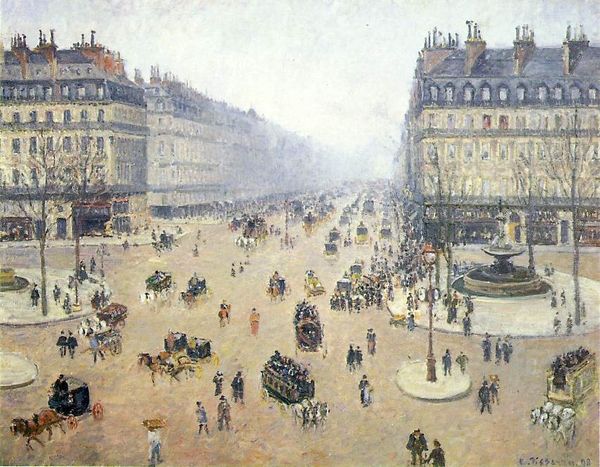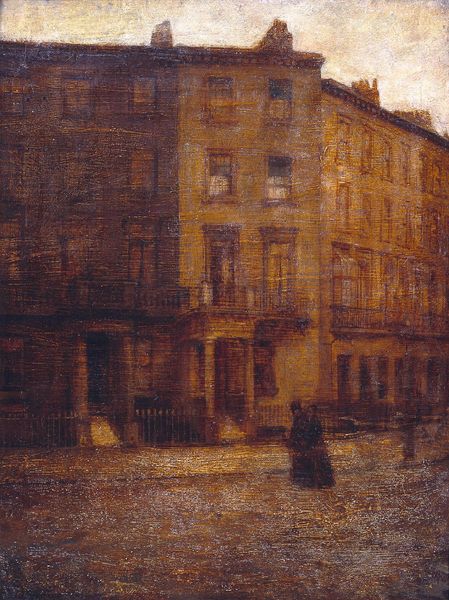
painting, plein-air, oil-paint
#
tree
#
painting
#
impressionism
#
plein-air
#
oil-paint
#
landscape
#
house
#
impressionist landscape
#
oil painting
#
cityscape
#
street
#
building
Copyright: Public domain
Curator: Looking at "The Perpiniere Barracks," painted by Gustave Caillebotte around 1878, one is immediately struck by its play of light. Editor: It does give a somber impression, wouldn't you say? There's a pervasive golden hue, but beneath it lies a quiet melancholy, as if time itself is suspended in this Parisian street. Curator: Absolutely. Caillebotte masterfully uses oil paints to construct a spatial relationship between the viewer and the barracks through an emphasis on architectural structures. Notice how he balances vertical and horizontal elements through buildings and streets. Editor: Yes, but those aren't just "elements." Consider the socio-political backdrop. Paris was in flux, reconstructing itself after the Franco-Prussian War and the Commune. Barracks don't only represent architecture, but a tangible exertion of control, an imposed order on a society emerging from intense upheaval. What statement is Caillebotte making? Curator: I think the statement lies within the composition. Caillebotte emphasizes balance by distributing points of interest evenly to achieve overall cohesion. Observe the brushstrokes - notice how he models light to build form within his representational objects. The streetlamp or carriages are rendered not as simple objects, but as forms undergoing constant flux due to light conditions. Editor: But, the subjects aren’t frozen either! The people depicted feel separated despite occupying the same plane, rendered in shades of alienation. What narrative exists between social class during this era, one so preoccupied by progress and expansion? Perhaps Caillebotte invites viewers to observe their society, a reflection during transition. Curator: I think, quite plainly, he wishes us to appreciate color, shadow, light. His impressionistic brush strokes remind us that objective reality always undergoes subjectivity—light cannot always accurately capture objective reality. Editor: So, in short, Caillebotte's piece operates on various registers—a beautiful urban scene rendered with light effects and also a quiet reflection upon historical and social elements and what it means to construct, and reconstruct. Curator: A multi-layered impression, captured.
Comments
No comments
Be the first to comment and join the conversation on the ultimate creative platform.
